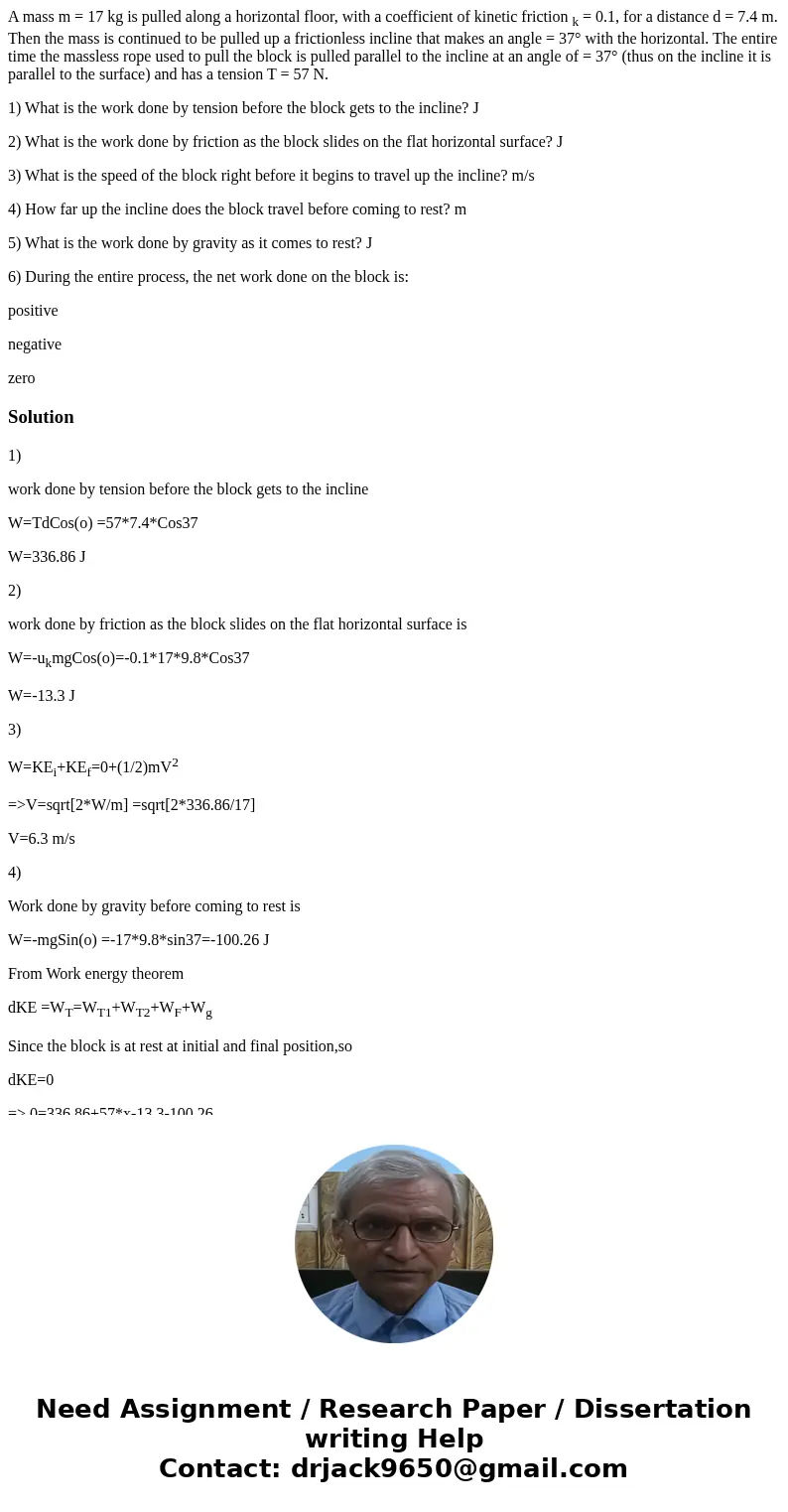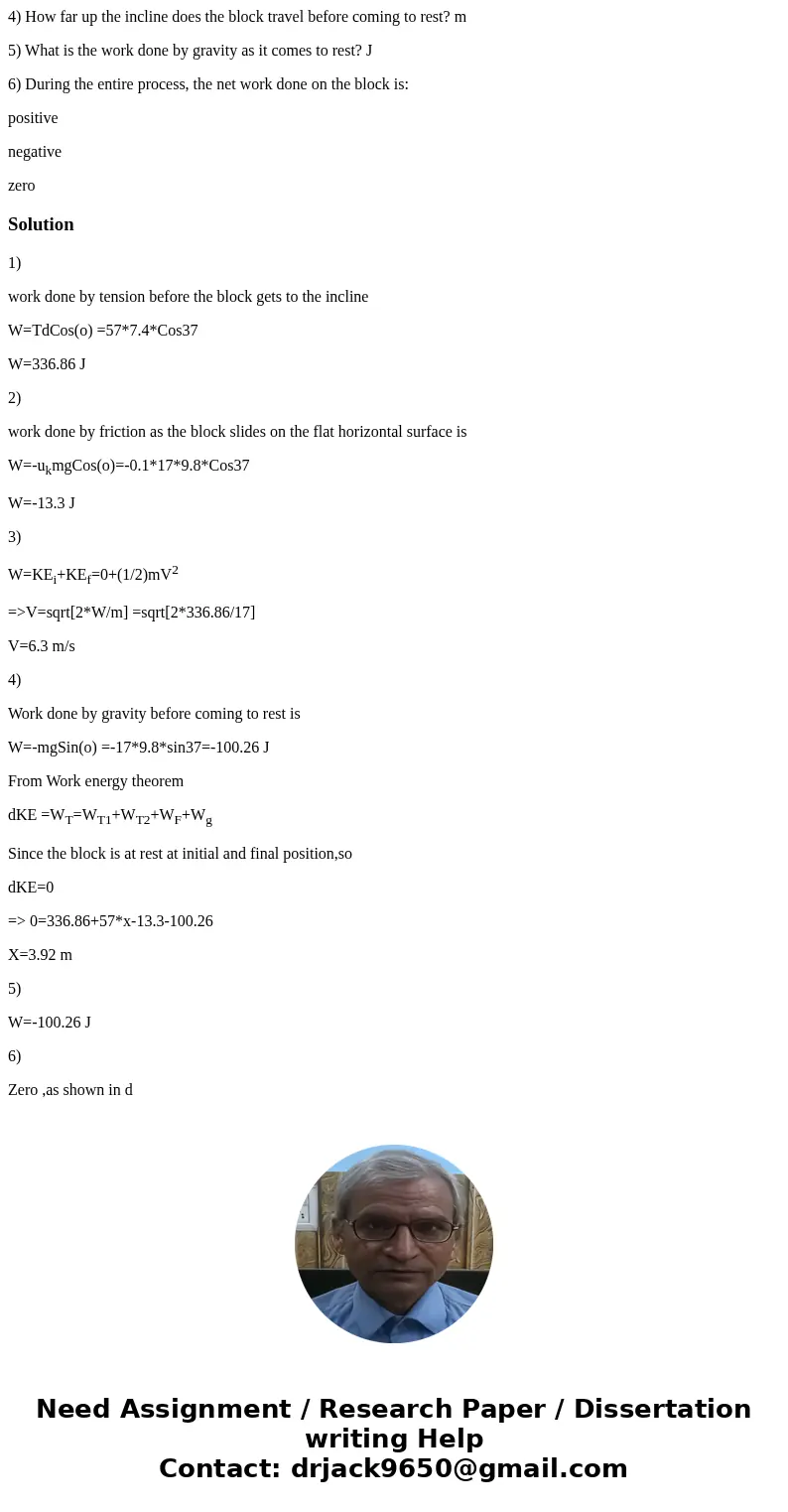A mass m 17 kg is pulled along a horizontal floor with a co
A mass m = 17 kg is pulled along a horizontal floor, with a coefficient of kinetic friction k = 0.1, for a distance d = 7.4 m. Then the mass is continued to be pulled up a frictionless incline that makes an angle = 37° with the horizontal. The entire time the massless rope used to pull the block is pulled parallel to the incline at an angle of = 37° (thus on the incline it is parallel to the surface) and has a tension T = 57 N.
1) What is the work done by tension before the block gets to the incline? J
2) What is the work done by friction as the block slides on the flat horizontal surface? J
3) What is the speed of the block right before it begins to travel up the incline? m/s
4) How far up the incline does the block travel before coming to rest? m
5) What is the work done by gravity as it comes to rest? J
6) During the entire process, the net work done on the block is:
positive
negative
zero
Solution
1)
work done by tension before the block gets to the incline
W=TdCos(o) =57*7.4*Cos37
W=336.86 J
2)
work done by friction as the block slides on the flat horizontal surface is
W=-ukmgCos(o)=-0.1*17*9.8*Cos37
W=-13.3 J
3)
W=KEi+KEf=0+(1/2)mV2
=>V=sqrt[2*W/m] =sqrt[2*336.86/17]
V=6.3 m/s
4)
Work done by gravity before coming to rest is
W=-mgSin(o) =-17*9.8*sin37=-100.26 J
From Work energy theorem
dKE =WT=WT1+WT2+WF+Wg
Since the block is at rest at initial and final position,so
dKE=0
=> 0=336.86+57*x-13.3-100.26
X=3.92 m
5)
W=-100.26 J
6)
Zero ,as shown in d


 Homework Sourse
Homework Sourse